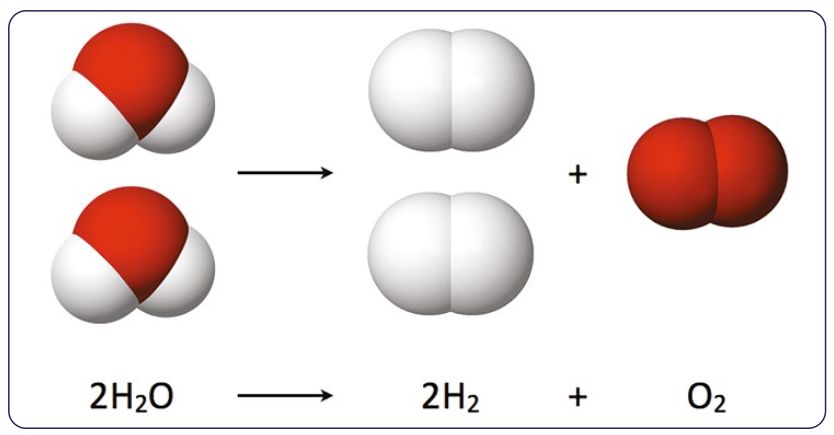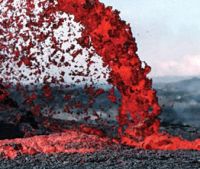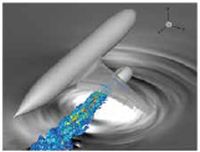The case studies below highlight some of the research carried out on ARCHER and ARCHER2 by the scientific community. We would be delighted if you would like to create and send in a case study highlighting the research you have carried out on ARCHER or ARCHER2. If you would help to create a case study please get in touch, we will help review the text and design the case study for you.
Simulating a flexible infectious viral protein
Disordered proteins play important roles in various diseases, including cancer and certain viral infections. These proteins can change shape depending on their biological context, making them challenging to study. Through an ARCHER2 Pioneer Project, researchers from University College London, King’s College London, and the Francis Crick Institute conducted extensive, computationally demanding simulations to characterise a specific region of a protein from SARS-CoV-2, the virus responsible for causing COVID-19.
Read more...
Solvation and Charge Transfer Processes at Semiconductor/Liquid Water Interfaces
The generation of hydrogen and oxygen through water splitting is considered to be a key technology for energy storage. However, no e!icient catalyst for this process has yet been found. Researchers at University College London have used the power of ARCHER2 to investigate the microscopic behaviour of water molecules at their interface with semiconductors to help in rationalising catalyst performance.
Read more...
High-Fidelity Simulations to Improve Performance and Safety of Nuclear Reactors
Nuclear power is a pivotal component of the UK’s ambitious Net-Zero strategies for 2050. Central to its use is the industry’s paramount commitment to safety. Researchers from STFC Daresbury Laboratory, University of Sheffield and EDF R&D have leveraged the computational power of ARCHER2 to carry out high-fidelity simulations of Pressurised Water Reactor fuel assembly under conditions of clad ballooning, in order to gain a deeper understanding of the safety implications of a potential issue with the integrity of a fuel rod.
Read more...
Simulating iceberg calving in 3D
Iceberg calving, the detachment of icebergs from the front of glaciers, is a major factor in ice mass loss. Researchers at the University of St Andrews and University of Stirling have developed a computer model to gain new insights into this poorly understood process.
Read more...
Sources of marine pollution for remote islands in the west Indian Ocean
Marine plastic pollution is a major environmental threat. Scientists at the University of Oxford have used the computing power of ARCHER2 to carry out one of the most ambitious marine pollution simulations to date, making it possible to identify the likely geographic sources of plastic pollution.
Read more...
Advancing PDC Hazard Modelling& Benchmarking Pyroclastic Density Current Models Against Large-Scale Experiments
Pyroclastic Density Currents (PDCs) are the most deadly of all volcanic hazards. An international consortium of volcanologists has used the computational power of ARCHER2 to run highresolution PDC simulations using data captured from a state-ofthe-art experimental facility in New Zealand.
Read more...
Cellular blood flow modelling towards precision healthcare for placental disorders
Disorders of the placenta are among the leading causes of pregnancy complications, resulting in insufficient oxygen and nutrients reaching the fetus. Researchers at the University of Edinburgh have used the power of ARCHER2 to carry out detailed modelling of placental blood flow, with the aim of being able to identify minute anatomical changes in the placenta that may lead to potential complications.
Read more...
Cardiac digital twin to improve patient therapy
Currently, 7.6 million people in the UK are living with heart conditions, with a person dying every three minutes because of a [heart disease](https://www.bhf.org.uk/). Most cardiac patients suffer from poor quality of life, despite being treated with the best available therapy, and often need multiple hospital visits.
Read more...
Flow within and around a large wind farm.
Today, the need for renewable sources of energy is more urgent than ever. However, the clustering of turbines in existing wind farms leads to ine!iciencies. Researchers at Imperial College London have used the power of ARCHER2 to perform one of the largest wind farm simulations to date to investigate this issue.
Read more...
Coral reef connectivity in the southwestern Indian Ocean.
Researchers at the University of Oxford have used the power of ARCHER2 to simulate how billions of coral larvae are transported by ocean currents. Understanding the connectivity of coral reefs can help conservationists to identify the most vulnerable coral reefs and develop appropriate conservation measures.
Read more...
Predicting airborne pathogen spread indoors.
Whenever we exhale, we release tiny droplets which may contain pathogens. Researchers at the University of Birmingham have used ARCHER2 to model how the airborne transmission of these droplets is affected by factors such as ventilation and heating.
Understanding this is key to making indoor spaces more resilient and preventing large-scale spread of diseases such as COVID-19, tuberculosis or measles.
Read more...
Forecasting the dispersion of volcanic ash and gas.
The National Centre for Atmospheric Science (NCAS), the British Geological Survey (BGS), the UK Met Office (UKMO) and the Icelandic Met Office (IMO) work under a Memorandum of Understanding on collaborative projects aimed at improving response to volcanic events. A dispersion modelling exercise led by the UKMO was conducted in June 2019 to improve the partners’ awareness of the volcanic ash dispersion modelling capabilities at each institution and test the ability of each institution to run its dispersion models.
Read more...
Predicting aircraft jet noise.
The world’s civil aircraft fleet almost doubles in size every 20 years, and the noise generated by these aircraft is having an unprecedented impact on communities. Plans to expand major airports will further exacerbate this problem if noise emissions are not significantly tackled. To meet the FlightPath 2050 targets set out by ACARE (Advisory Council for Aviation Research and innovation in Europe)1, the perceived noise emission from flying aircraft in 2050 needs to be reduced by 65% relative to the capabilities of typical new aircraft in 2000.
Read more...
Improving cloud modelling for better weather and climate prediction.
Current weather and climate models struggle to resolve the complex details of the interactions between clouds and their environment.
A team of researchers from the University of St Andrews and University of Leeds had previously developed a new numerical model, MPIC (Moist Parcel-In-Cell), which deals with the dynamics of clouds. These researchers have now incorporated this code into a community code used by atmospheric scientists around the UK, the MONC (Met Office NERC Cloud) framework.
Read more...














